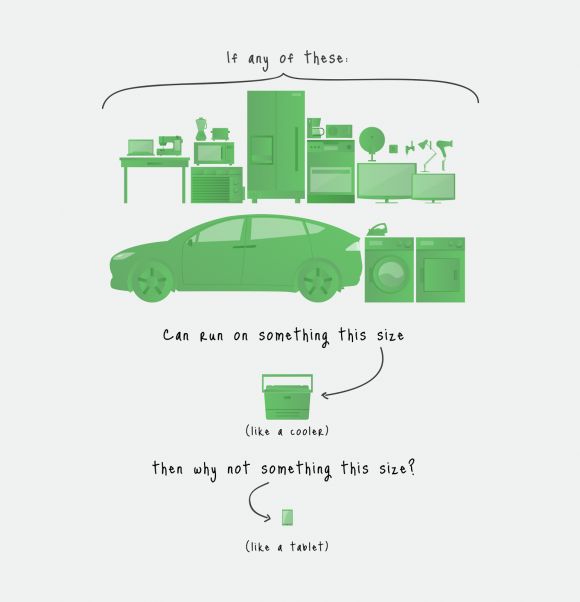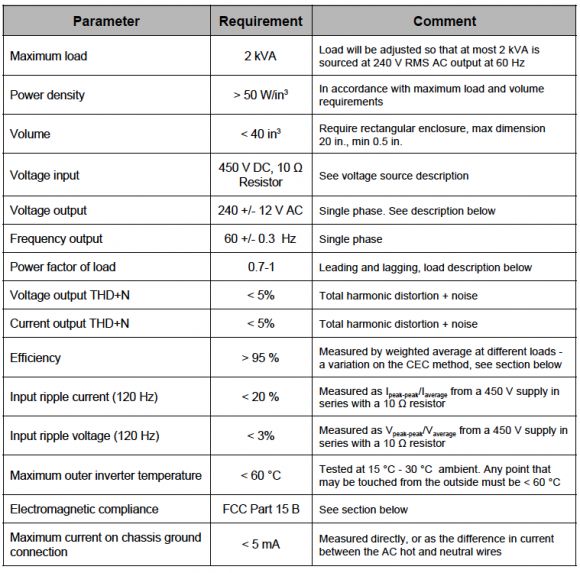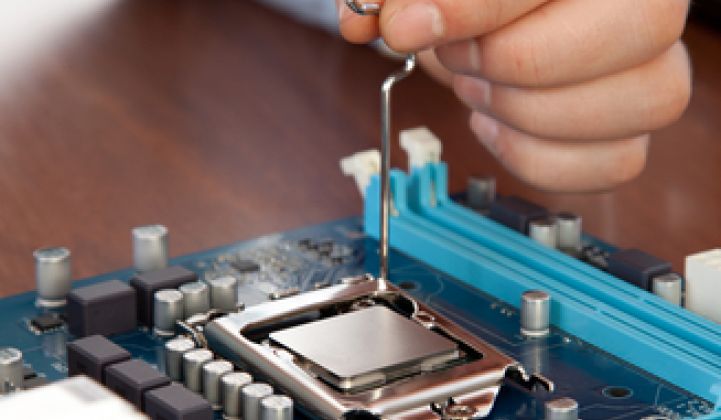Back in May, Google announced its Little Box challenge, a $1 million prize for technology that can radically shrink the size and weight of inverters. This week, it opened the contest to applicants, announced the IEEE as a partner, and clarified just how small it’s hoping to get with the next-generation power conversion technologies.
According to Google’s Tuesday blog post, its goal is to shrink today’s picnic-cooler-sized DC-to-AC inverters, used to connect solar panels, wind turbines, electric vehicles and other grid edge devices, into something “the size of a small laptop, roughly 1/10th its current size.” In technical terms, that equates to a kilowatt-scale inverter with a power density greater than 50 watts per cubic inch.
Google’s Little Box challenge specifications document (PDF) offers a lot more details, including minimum efficiency (95 percent), how hot to the touch it can get (60 degrees Celsius), and a slew of specs for how the devices can interact with the grid. But all of these are more or less standard solar inverter requirements -- it’s the size that matters most.
Getting today’s inverters down to laptop size will require some revolutionary new materials and design concepts, according to MJ Shiao, director of GTM's solar research. Today’s inverter manufacturers are pushing the higher bounds of efficiency, and "investing into the operational, value, feature side of the inverter may show more returns -- not that there's no value in investing in smaller footprints," he said. "Smaller, more efficient designs clearly have some return. Fitting more power into the same footprint can lead to lower electrical balance of systems and logistical costs."
Google concedes that it’s setting a high bar, and it’s enlisted the help of the IEEE Power Electronics Society to help judge and select the winners. Applicants have until July 2015 to get their submissions in. As for why it thinks that much smaller inverters are important, Google’s blog post cited their utility to “help create low-cost microgrids in remote parts of the world. Or allow you to keep the lights on during a blackout via your electric car’s battery. Or enable advances we haven’t even thought of yet.”

Of course, $1 million doesn’t go that far in terms of bringing a technical concept to lab demonstration, let alone commercialization. But a relationship with Google could be worth a lot more than that, particularly given its recent interest in power conversion technology. For the past few months, Google has been hiring power electronics engineers for a project dubbed the “Bottom Up Grid,” with the promise of getting to work on “advanced electrical power conversion and conditioning solutions that aim to fundamentally change the world of power.” According to news reports, Google has put former Department of Energy ARPA-E program director Arun Majumdar in charge of a power electronics group within the company’s Energy Access team.
Where could the breakthroughs come from? New wide-bandgap semiconductor materials are helping power electronics achieve better performance in smaller packages. President Obama dedicated $70 million to a power electronics manufacturing hub in North Carolina last year, and ARPA-E is funding a host of next-generation semiconductor research efforts.
One of them, Transphorm, has Google as an investor, and is using gallium nitride as a replacement for silicon in all manner of power electronics components. Silicon carbide is another material that promises to allow significant reduction in materials weight and cost. Google's Little Box web page lists semiconductor companies including Transphorm, NXP, Cree and United Silicon Carbide as places where Little Box applicants should go for information, and asks other wide bandgap device manufacturers not on the list to add their names as well.
Google’s interest in better power conversion technology isn’t just charitable. The company has invested more than $1 billion in solar and wind power projects in the past five years, and holds a 37.5 percent stake in the Atlantic Wind Connection, a $5 billion offshore wind transmission project planned for the East Coast. It’s also laying the groundwork for more active participation in the grid. In 2010, it received approval from the Federal Energy Regulatory Commission to act more like a utility in terms of onsite generation and power-purchase agreements. And, of course, it has been squeezing efficiency out of its data centers for years now, another area where tiny gains in power conversion efficiency can add up to huge savings.
Google’s Little Box challenge specifications




